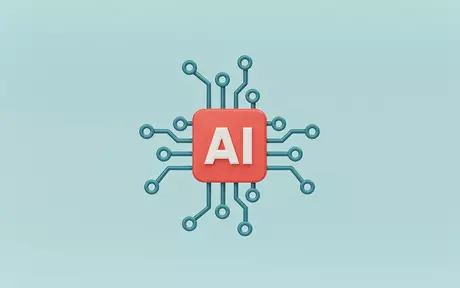7 challenges to delivery in the service-based industry
Service-based firms face a unique set of challenges in a world of rapidly shifting priorities, expectations, and corporate realities. One thing they must focus on is how their billable employees utilize and benefit from internal systems.
Billable employees who manage and deliver projects bear the responsibility of delivering a high level of service, but face challenges that often have one common factor. Keep reading to learn the challenges faced by service-based firms, and where the solution lies.

How do billable employees affect service delivery?
Inefficiency-driven losses, intense competition, and the challenges of attracting appropriate talent can all be large factors that affect the success of delivering their service.
However, billable employees are the lifeblood of service-based organizations - they take care of everything from winning business to executing projects profitably.
Put simply, they’re the members of a team who own the responsibility of delivering these services successfully, by collaborating with colleagues, managing the expectations of the C-suite, and representing your organization to the customer.
It’s the people on the ground who often affect service delivery the most, and their experience of internal systems will have a direct impact on the customer experience too. Any employee you pay money to needs to be optimized like any other resource, and, when not managed correctly, can cost greatly.
7 obstacles that affect the delivery of service
Most organizations will find 7 key obstacles get in the way of delivering projects on time, within budget, and with customer satisfaction.
There is one key factor that links them – people.
Organizational complexity
One reality all modern organizations must accept is the popularity of hybrid working. Hybrid working became the norm in recent years and is now an expectation of modern talent.
Even if your employees are all in one place, the modern talent you need to fill personnel gaps may exist outside your region and some firms won’t have the operational structure to support remote work without losing money.
The systemic issues organizations face when dealing with the HR behind international employees can derail many organizations. Payroll, holiday management, regional compliance, and tax issues, are merely a few issues a HR department must deal with effectively for global employment to work.
Data visibility
To manage projects effectively you need to be in control of your data. Isolating your HR or financial data into siloes can create obstacles to resource optimization.
Managing your people requires cross-functional data, for example, payroll and compensation data is often incomplete without a proper understanding of how it affects finances generally, and how this can affect other functions.
This leads to poor staffing decisions, having the wrong people in the wrong places, and business functions that don’t have the visibility to forecast or analyze data effectively.
Poor performance management
Finding new and modern talent isn’t always the answer to successful service delivery. Sometimes your current employees are not sufficiently motivated or may have skills that aren’t being used.
People are your most important asset and when they aren’t optimized, they can suffer, and turnover can increase while customer satisfaction decreases. This is often the result of poor HR practices that isolate employees from their management and performance.
Employees want ownership of their performance documents, but managers also need to be better informed about their employee’s skills and career goals to ensure services get the right staff. Where this isn’t provided, you could lose current talent to competitors.
Lack of clear path for training and development
Many employees struggle to develop their skills effectively, with an inability to find mentors, courses, or time to develop the skills necessary to increase service quality.
Many training and development resources are out there that support firms when up-skilling and re-skilling their current talent, but legacy systems can prevent proper integration or visibility of these resources.
Ill-informed management
No matter how good your managers are, they will remain misinformed about employees' skills and performance without the tools to manage this data.
Legacy systems that don’t collect and store performance data effectively will lead to poor communication and awareness. Better informed managers and staff can result in more honest, direct, and transparent conversations within teams that will result in better service.
Inability to measure employee engagement
Engagement is a key metric to understand the ability of employees to self-manage. If project managers can’t see the levels of engagement from their teams, it’s impossible to gather and share feedback. From either your people, the customer, or anyone else.
When employees have high engagement, this means they can navigate an internal system effectively and are taking the initiative when it comes to engaging with colleagues, customers, and their projects.
There’s a direct correlation between employee engagement and how services are delivered, but without data on employee engagement, it’s hard to know what or how to change.
No management of collective knowledge
In many project teams, knowledge is leveraged too informally through casual conversations, or too formally via static project databases.
This can restrict the ability of employees to learn from each other. And worse, it means that a workforce will derive no value from self-organizing their knowledge and collaboration.
With the proper tools, managers can encourage teams to collaborate and share knowledge, and ultimately provide a better service to the customer.
How an integrated Cloud-based solution can help
All of these challenges have something in common: they are all people challenges.
People are the most important asset to a service-based firm, and even if your challenges fall outside the seven listed, a modern solution is required to allow your people to shine. Legacy systems often allow these obstacles to get in the way of service delivery and have little recourse to deal with these issues.
A Cloud-based ERP solution can integrate HR data with other functions such as finance for great organizational visibility, and importantly, help you empower your people with a more user-friendly experience of their systems.
To learn more about modern ERP solutions, the cost of legacy systems, and how to empower your people consult our blogs or book a demo with Unit4 to hear more about how our product can help you.





